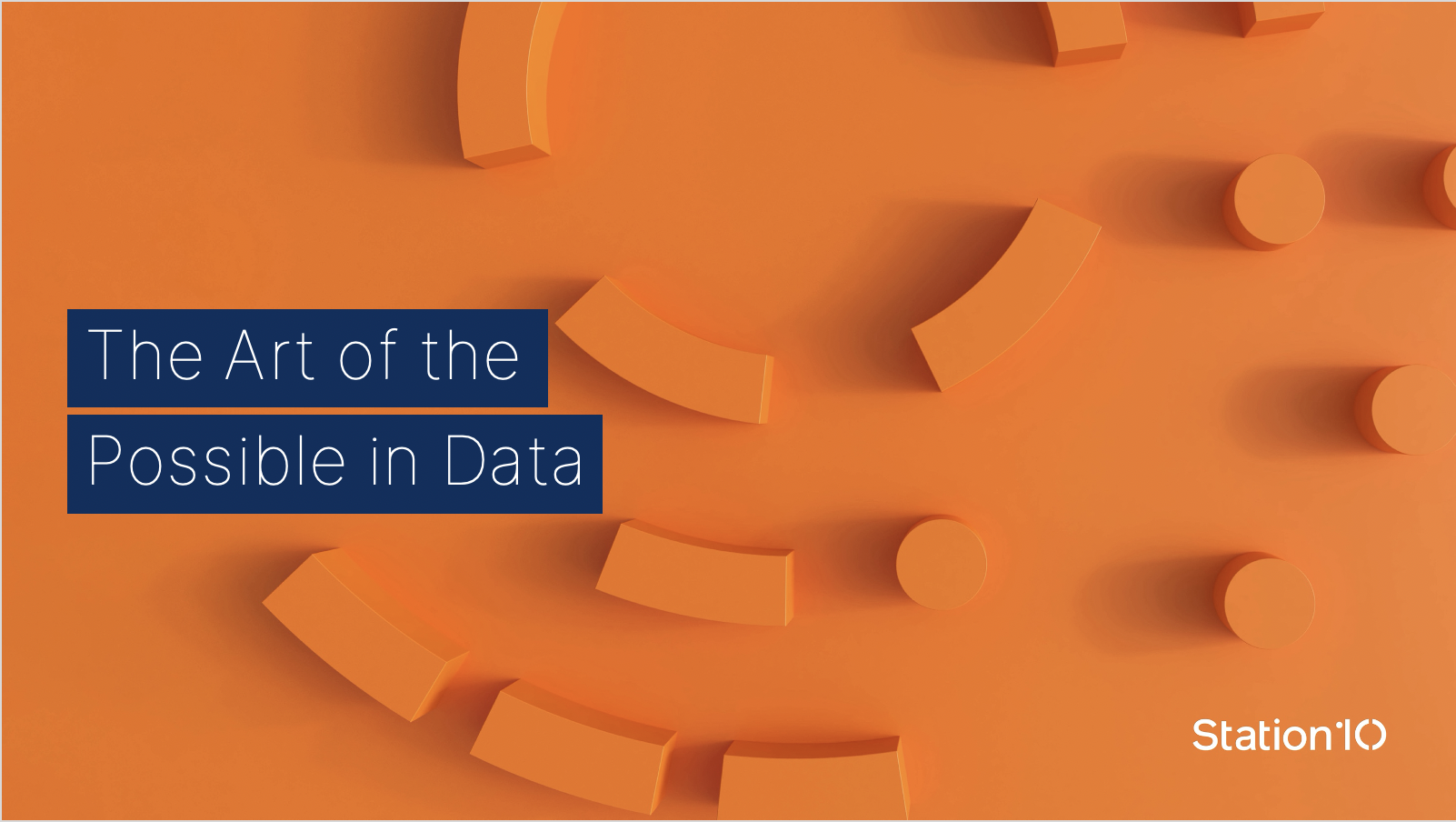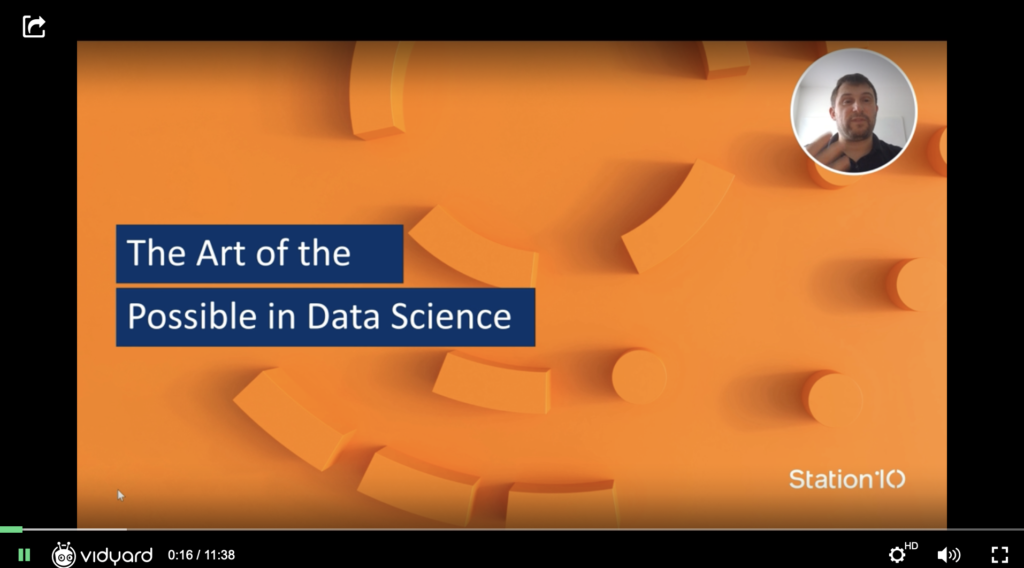September Fun Fact

Our monthly dose of David’s fun fact is here for you to enjoy. Do you know where algorithm originates from – watch this and you soon will do!



Our monthly dose of David’s fun fact is here for you to enjoy. Do you know where algorithm originates from – watch this and you soon will do!


We are living in one of the most exciting times in terms of technological developments. As data processing and machine learning advances, the boundaries of its application are widened. The ever-evolving branch of computational algorithms are considered the “work horse” in many organisations across all industries. As alluded to by the title, this blog will briefly explore the applicational possibilities of machine learning with primary focus given to the financial sector.
Natural Language Processing (NLP) is a field that has heavily developed over the last decade. What started out as text classification has progressed to text understanding and most recently, text generation; whereby a robot is able to write an entire article.
Regarding the financial sector, the ability to generate text from data inputs has been utilised to form reports, increasing efficiency and reducing liability of human error. Further progress has been seen with image recognition, where information can be depicted and translated into a lexical format. Application for this can be found predominantly within insurance. For example, digital assets such as satellite imagery can be used to investigate potential fraudulence in insurance claims.
Processes require use of reinforced learning whereby human input in the form of punishment and reward to train models. These are implemented in some cases by inputting annotated images thousands of times so the program can recognise specific objects or trends. An example of this can be found in the Alpha Go program; the first computer program to defeat the Go world champion (professional human gamer). Furthermore, data science within trading has provided gateways to generate competitive advantage. More specifically, reinforced learning has been utilised by leading firms to create advanced signals, maximising financial performance when block trading. Due to the progressive nature of the technology, algorithms can learn from themselves over time by understanding previous signals.
Lastly, recommender systems provide companies with the intelligence needed to target specific audiences at the appropriate time. An example of this being, during the lockdown period many households decided to purchase pets. Data driven from consumer context, behaviour, needs, and preferences enabled pet insurance brokers to target new pet owners with intelligent, personalised offerings. However, it is important to note that recommender systems can be controlled so that unwanted spikes in trends do not skew or change results.
In summary, we are amidst an exhilarating time where machine learning and data utilisation is advancing rapidly. With its application ever expanding, we endeavour to seek new ways in which data can drive positive change to businesses and individuals across the globe.
Watch our summary by clicking here: https://share.vidyard.com/watch/wy1WMhgh2sNSsF3TfPfjRc
Click to arrange a discussion with David Ellis (MD) david.ellis@station10.co.uk or Nick Willis (Commercial Director) nick.willis@station10.co.uk
Book into our next event on the 22nd October as we further explore ‘The Art of The Possible’ here. The Art of the Possible – for you and your business – Station10

This summer Station10 was invited to take part in Peabody’s Young Ambassadors Leadership program where we had the opportunity to run data analysis workshops over a 4 week period. The focus of the workshops was to provide the young ambassadors with an opportunity to learn about data consultancy and get first hand experience in interrogating data.
The weekly sessions were designed to give the ambassadors the skills to review, interrogate and storytell with data. The programme they were working on had a focus on knife crime in London – an issue that, as a group of 13-18 year olds, they are acutely aware of and in some cases have experience of.
The publicly available datasets we used were provided by the Office for National Statistics. They showed data collected by police which included: recorded knife crime offences, stop and searches (for perceived knife crime offences), hate crimes and convictions that lead to prosecutions. Importantly, all of these datasets could be cut by time period, age, ethnicity and region.
Each session explored a different element of the data:
Going into this experience we were all unsure how best to talk to teenagers (in general), as well as not knowing how to get them to discuss and show an interest in numbers. It’s not a task any of us felt ready or equipped to do. However, as soon as we had presented the datasets, answered a few basic questions on the numbers and what the charts were showing, we were all struck by how well the groups were able to debate and contextualise what they were interpreting from the data. It provided a more nuanced look and understanding of the data used across the media and Met Police. Specifically, questioning the data collection, bias and ethics in the current reporting of these figures.
For example in session 3 we looked at a headline in The Sun newspaper: “How crime in London has soared under Sadiq Khan”, supplemented with a graph showing a single bar for knife crime, with the label “52%, knife crime up”.
This article stimulated a lot of conversation amongst the young ambassadors who compared the figures in this article to the statistics they had gathered from the Met Police data. They soon began to criticise the article, leaving them searching for deeper context asking questions such as:
In the final session it was great to see how the students logically argued their views, using the facts they have pulled from our sessions alongside their own experiences and knowledge of today’s society with factors like Brexit and economic stability. By the end of this session we could really see how the students had grown in confidence and had thought about their analysis and how it’s applicable to the wider picture.
The outcome of these sessions enabled the students to analyse Met Police data, pulling out some well known themes, as well as some lesser publicised elements. We cannot fault the analysis they gave us.
They cannot deny there has been a rise in knife crime, even if it has dipped slightly in a recent YoY comparison:
But the analysis on stop and search showed something that is rarely reported in the mainstream media:
Our takeaway from this experience is that in a world of misinformation, incorrectly quoted statistics and news populism, having voices that challenge the narrative of data analysis and the use of statistics is really important. Specifically, connecting the people the data “says” an issue is disproportionately impacting, and asking for their analysis will provide a more rounded interpretation and understanding of the numbers.
At Station10 we are always looking for charitable groups to support with data, as this experience has opened our eyes to the power of connecting those potentially impacted by an issue to the data representing the issue. Please get in touch with if you would like us to help you explore your data.
Data Source: https://www.met.police.uk/sd/stats-and-data